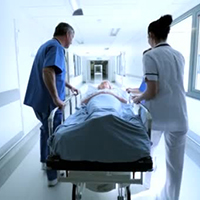 Smart Citations
Smart CitationsSee how this article has been cited at scite.ai
scite shows how a scientific paper has been cited by providing the context of the citation, a classification describing whether it supports, mentions, or contrasts the cited claim, and a label indicating in which section the citation was made.
Evaluation of stroke related risk factors in wake up and non-wake up stroke patients
Wake-Up Stroke (WUS) is defined as a stroke with the unclear onset of symptoms and subsequent neurological deficits which perceived upon awakening. WUS patients are often excluded from acute fibrinolytic and reperfusion therapy due to the unknown exact time of symptoms onset. This study aimed to evaluate patients with and without WUS characteristics and associated risk factors at two tertiary hospitals. First, we prospectively evaluated consecutive patients with stroke symptoms and determined stroke sub groups by using Computed Tomography (CT) scan. Next, demographic and clinical characteristics including past medical and drug consumption history as well as cardiac function index (ejection fraction), LDL (mg/dl) level and hematologic parameters: hemoglobin (Hb); hematocrit (Hct); platelet (Plt) were assessed. Results: 510 patients (56.1% men and 43.9% women) with averaged age of 70 and 72 years were studied, respectively. Of 510 patients, 405 (79.4%) had non-WUS stroke (known-onset stroke) and 105 (20.6%) had WUS strokes (unknown-onset stroke). The WUS occurrence most likely was observed in ischemic stroke compared to hemorrhagic one. No significant differences were found between patients from both groups regarding stroke risk factors. However, hypertension and family history were more common in patients with WUS (p>0.05). Moreover, individuals with a previous cerebrovascular accident in WUS group were almost similar to non-WUS counterparts. No differences also detected in case of hematologic characteristics, heart function index and LDL levels between study groups (p>0.05). Together, wake-up stroke occurs in approximately 20% of stroke subjects. In this study, patients with WUS had more hypertension and family history.
How to Cite
PAGEPress has chosen to apply the Creative Commons Attribution NonCommercial 4.0 International License (CC BY-NC 4.0) to all manuscripts to be published.

 https://doi.org/10.4081/ecj.2020.8834
https://doi.org/10.4081/ecj.2020.8834





